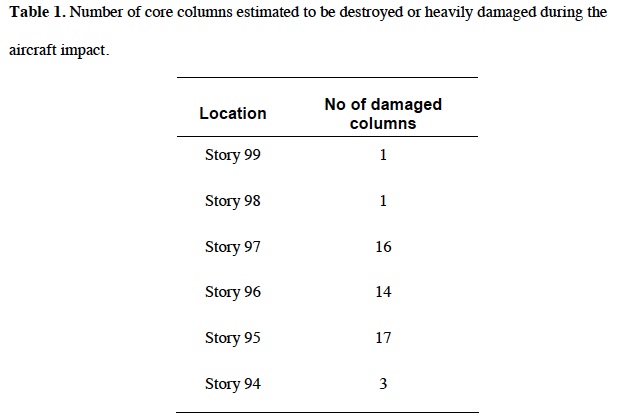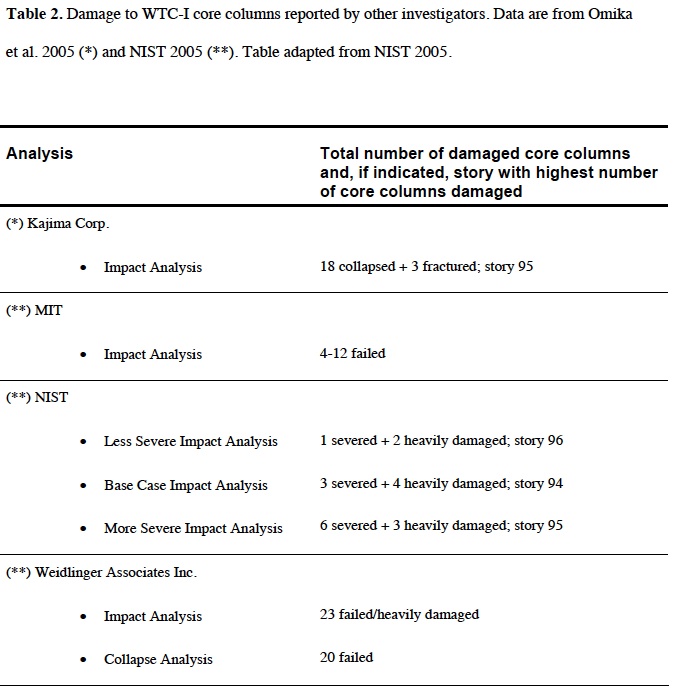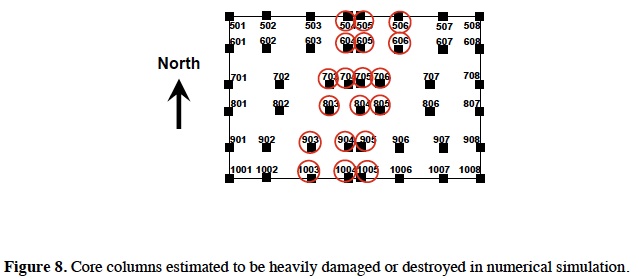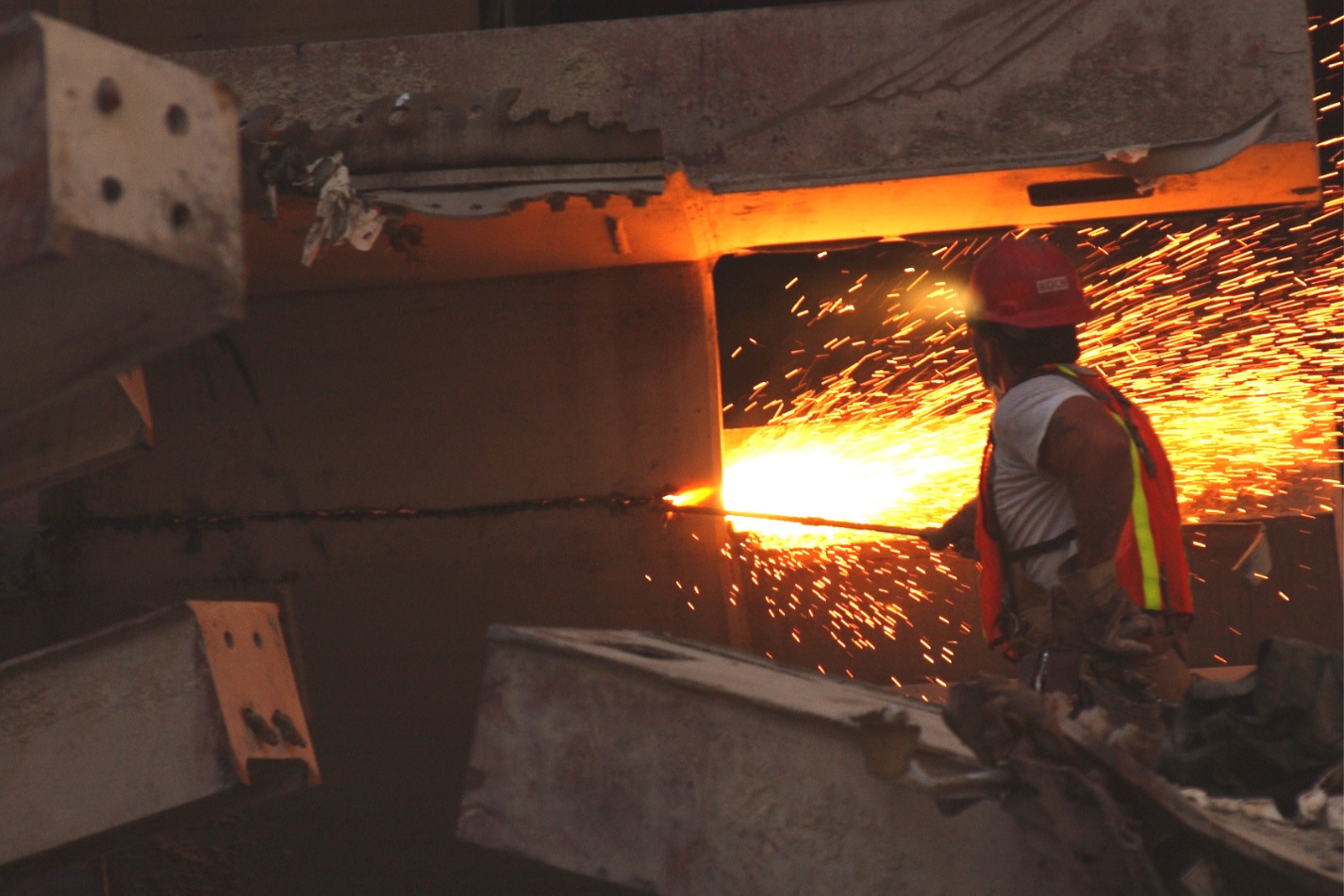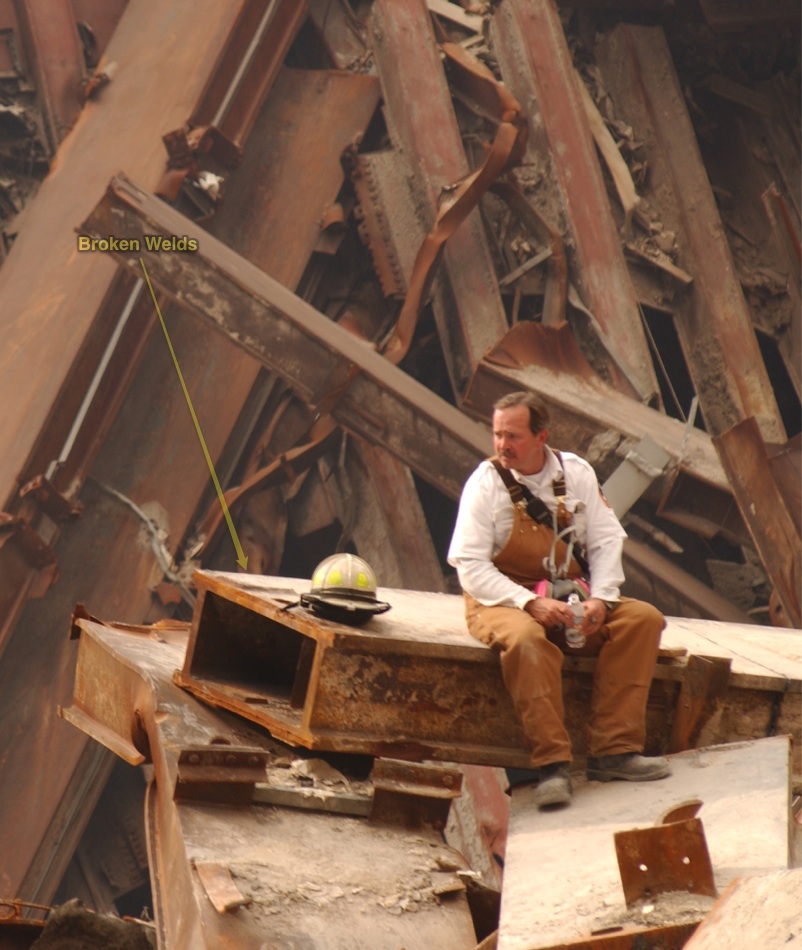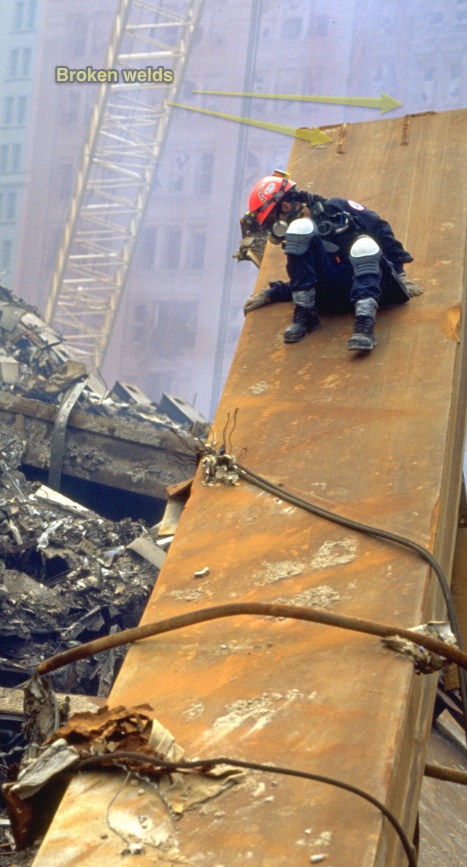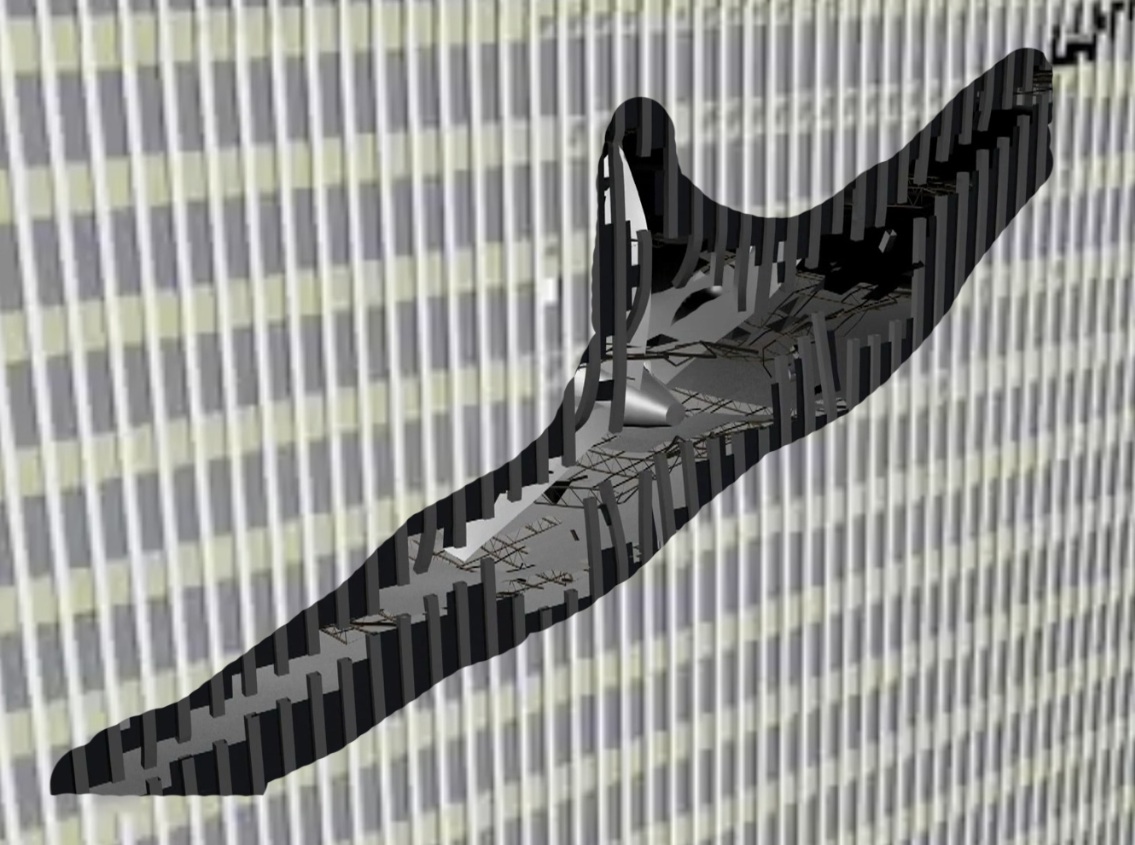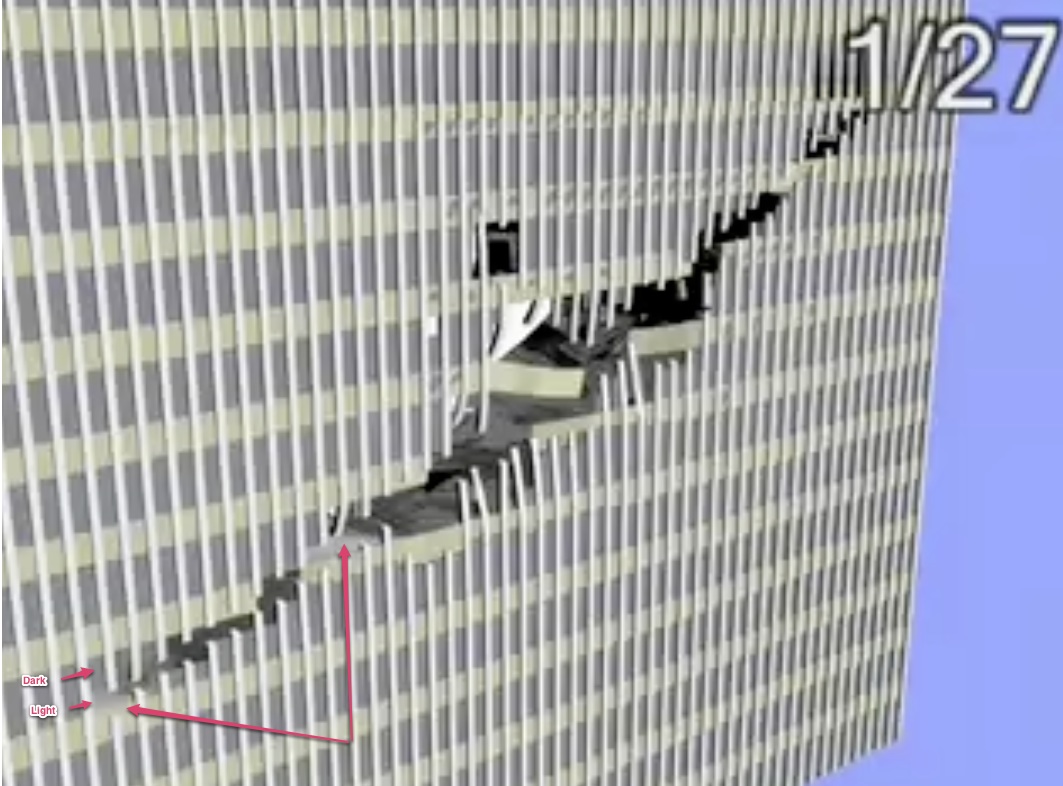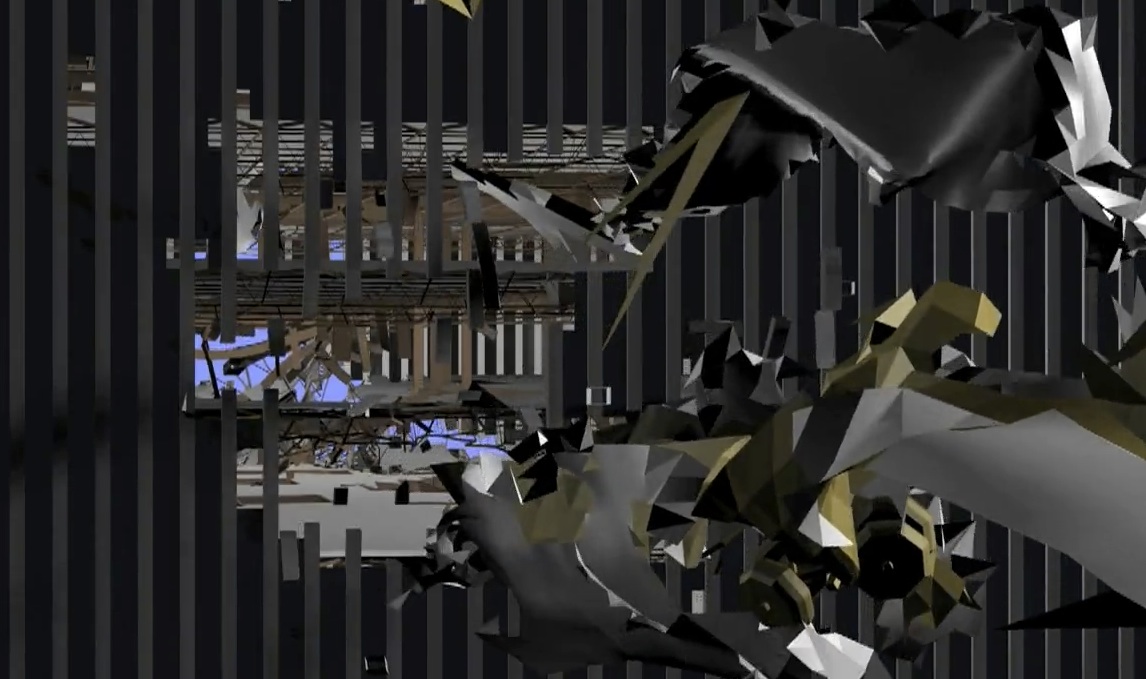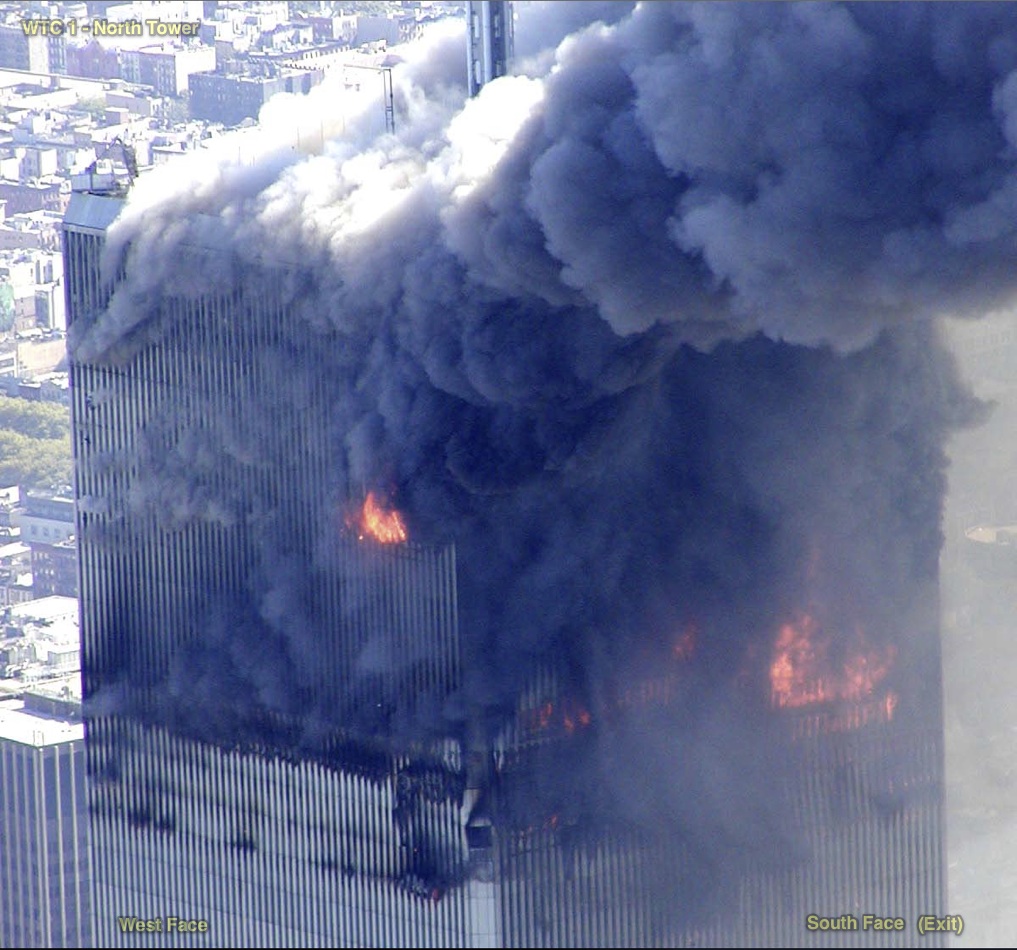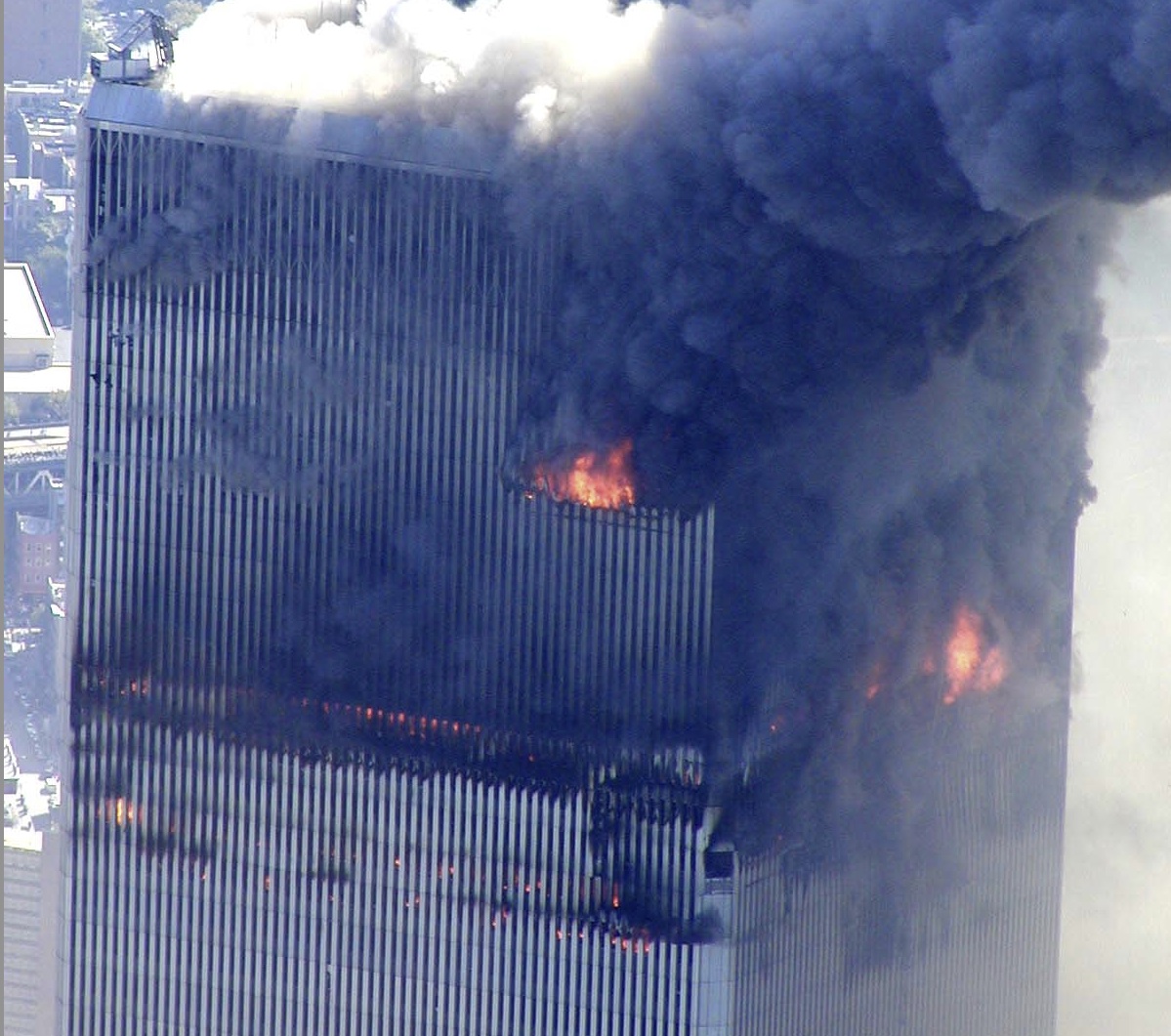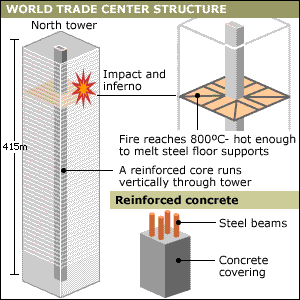Damage to WTC-I core structural elements
There were forty-seven columns arranged in six column lines in the core structure of WTC-I.
Figure 6 shows the core columns as well as the perimeter columns on a typical floor plan. Figure
7 shows a perspective view of the columns and floor slab of the 95th story.
Because there is no observational information on the state of core structure after the aircraft
impact, computer simulations are used to estimate the damage sustained by the structural
elements in WTC-I core.
Table 1 lists the estimated number of heavily damaged core columns according to our final
simulation. However, it must be added that during the series of simulations performed, we found
the estimates to be very sensitive to model parameters such as failure strain of materials, to the
extent that in the heavily damaged stories 95 through 97,
the number of damaged columns could
be as few as half the numbers listed in Table 1. This observation was not surprising given the
fact that simulation results reported by other researchers (see for example, NIST 2005 and
Omika et al. 2005) with regards to damage to the core columns are scattered over a wide range.
Table 2 lists the estimates for maximum number of destroyed core columns as reported by
various research groups.
From the results obtained at Purdue and elsewhere, it is evident that to determine by calculation
the exact number of columns damaged by the impact is beyond the technology currently
available to us. However, in our simulations, we observed that the heavy damage to the core
columns concentrated consistently at stories 95 through 97. This too should not be considered
surprising given the fact that the aircraft impacted the WTC-I tower at or very close to floor level
96 and that the airplane had the greatest concentration of mass close to its centerline.
Figure 8 shows the core columns in story 95 estimated to be heavily damaged or destroyed by
direct aircraft impact or airborne debris. Several beams in the region with heavy column damage
were estimated to be destroyed. However, in our simulations, no standing column was found to
have lost all of the beams attached to it. Core columns in story 95 were studied further to
estimate their behavior under thermal loads that ensued after the aircraft impact.
